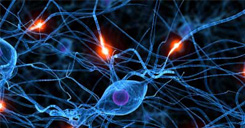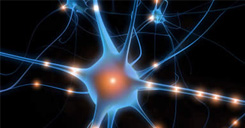


NCV
Nerve Conduction Velocity (NCV) Test
What is it?
A nerve conduction velocity test, also called a nerve conduction study, measures how quickly electrical impulses move along a nerve. It is often done at the same time as an electromyogram, in order to exclude or detect muscle disorders.
A healthy nerve conducts signals with greater speed and strength than a damaged nerve. The speed of nerve conduction is influenced by the myelin sheath-the insulating coating that surrounds the nerve.
Most neuropathies are caused by damage to the nerve's axon rather than damage to the myelin sheath surrounding the nerve. The nerve conduction velocity test is used to distinguish between true nerve disorders (such as Charcot-Marie-Tooth disease) and conditions where muscles are affected by nerve injury (such as carpal tunnel syndrome).
Why should I do it?
This test is used to diagnose nerve damage or dysfunction and confirm a particular diagnosis. It can usually differentiate injury to the nerve fiber (axon) from injury to the myelin sheath surrounding the nerve, which is useful in diagnostic and therapeutic strategies.
Who is a candidate for the test?
A nerve conduction velocity test is usually ordered to diagnose or evaluate:
- nerve injury in a person who has weakness in an extremity
- nerve injury or disease, as opposed to muscular injury or disease
- the severity of nerve injury
- the response of a nerve disease or injury to treatment
How is it performed?
During the test, flat electrodes are placed on the skin at intervals over the nerve that is being examined. A low intensity electric current is introduced to stimulate the nerves.
The velocity at which the resulting electric impulses are transmitted through the nerves is determined when images of the impulses are projected on an oscilloscope or computer screen. If a response is much slower than normal, damage to the myelin sheath is implied. If the nerve's response to stimulation by the current is decreased but with a relatively normal speed of conduction, damage to the nerve axon is implied.
How will it feel?
There is generally minimal discomfort with the test because the electrical stimulus is small and usually is minimally felt by the patient.


